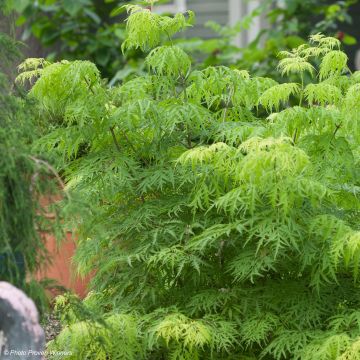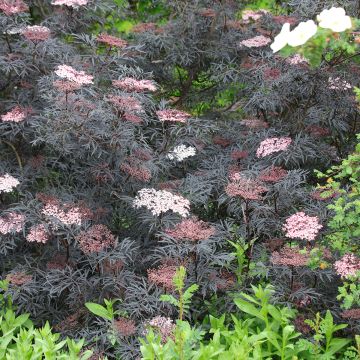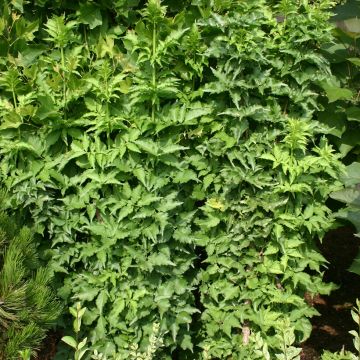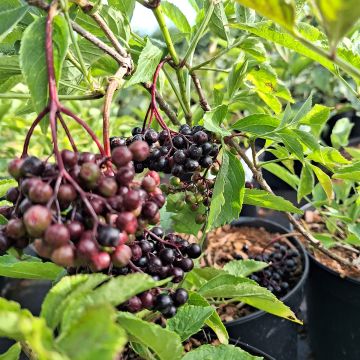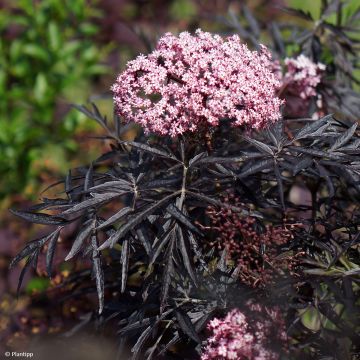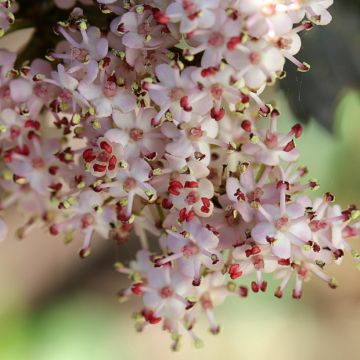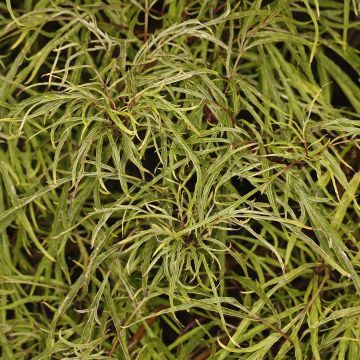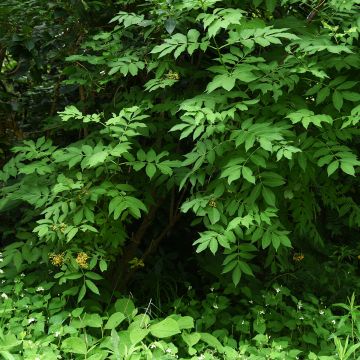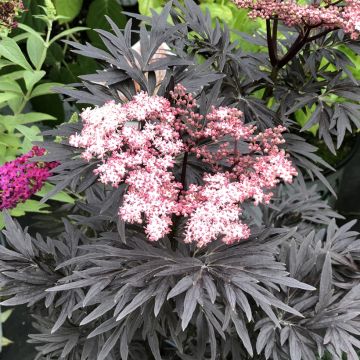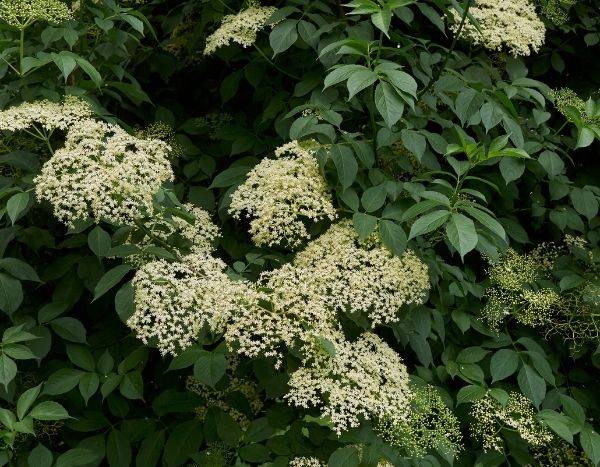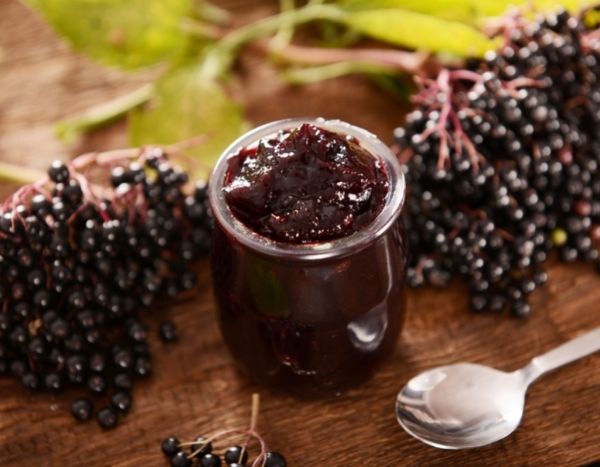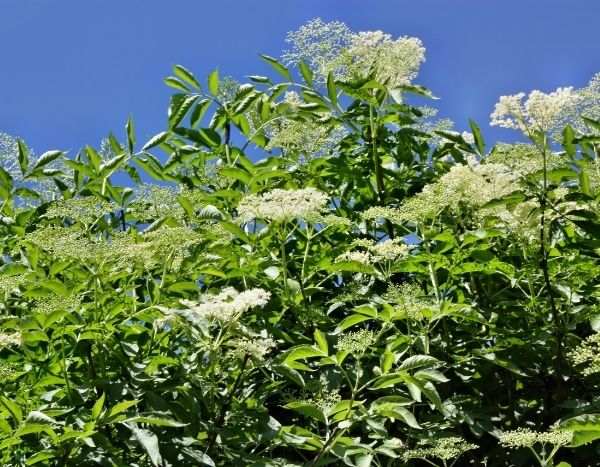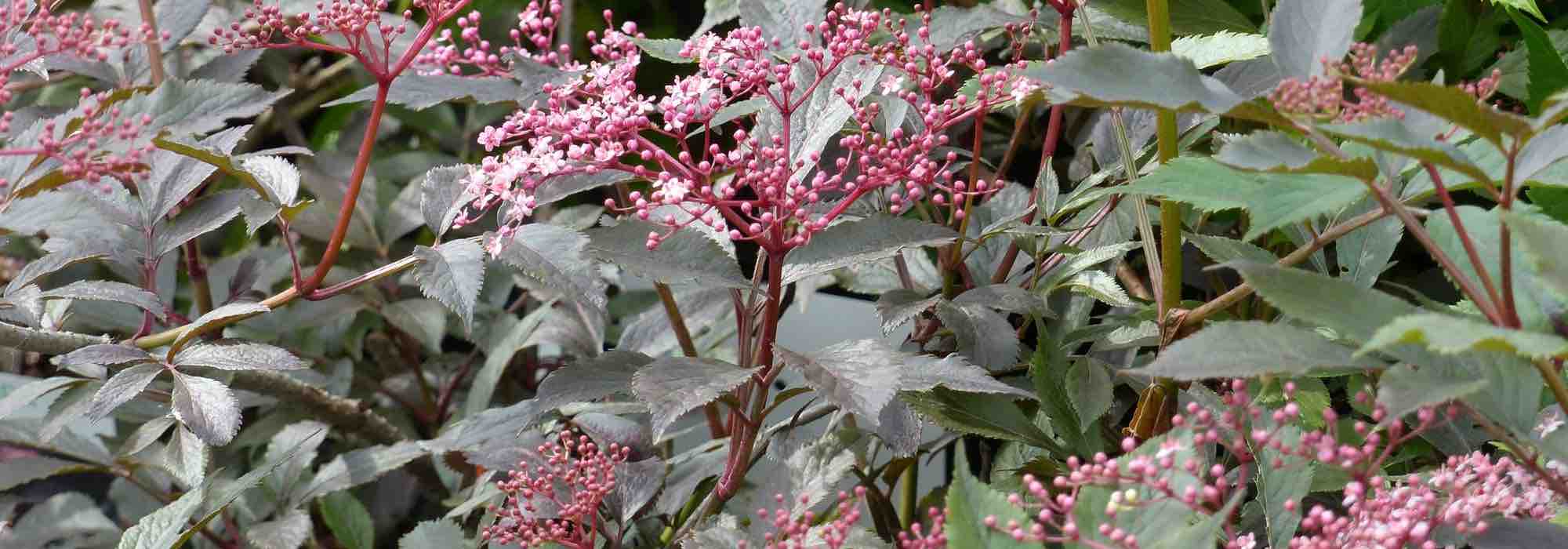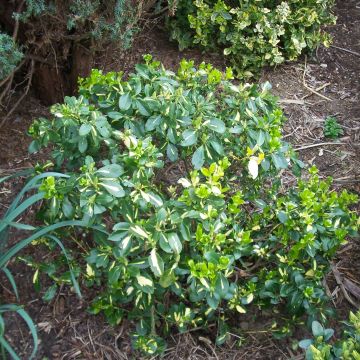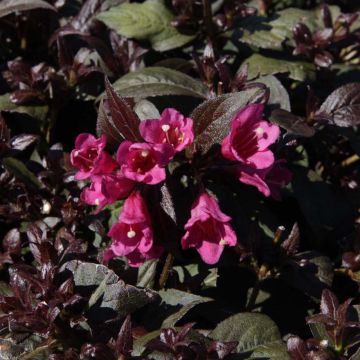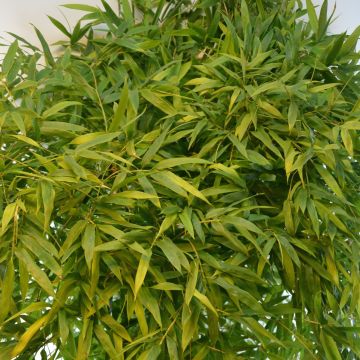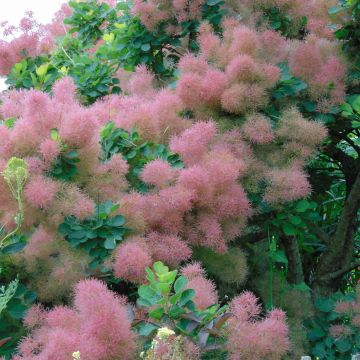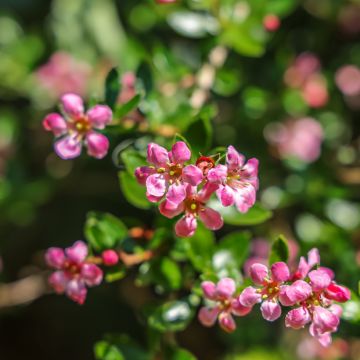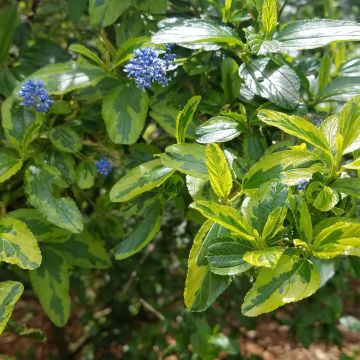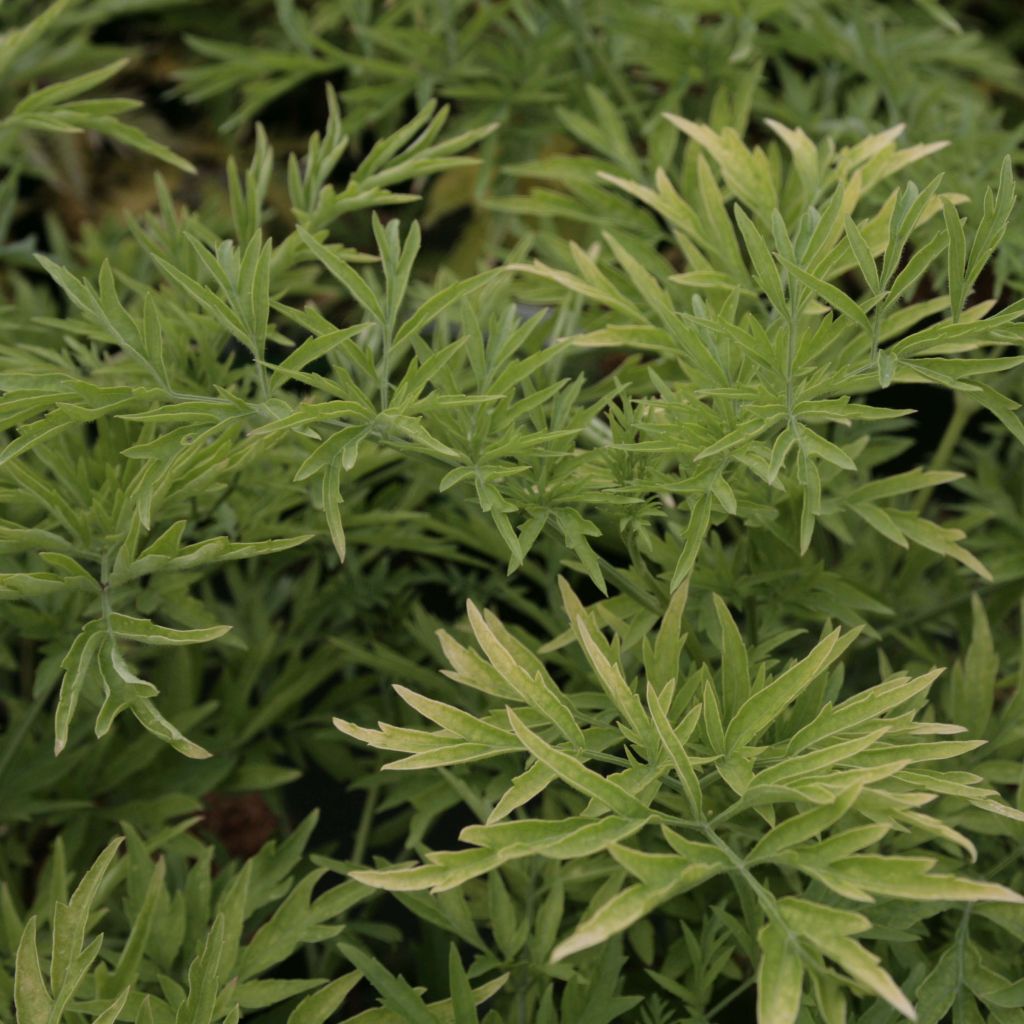

Sambucus nigra Golden Tower - Black Elder
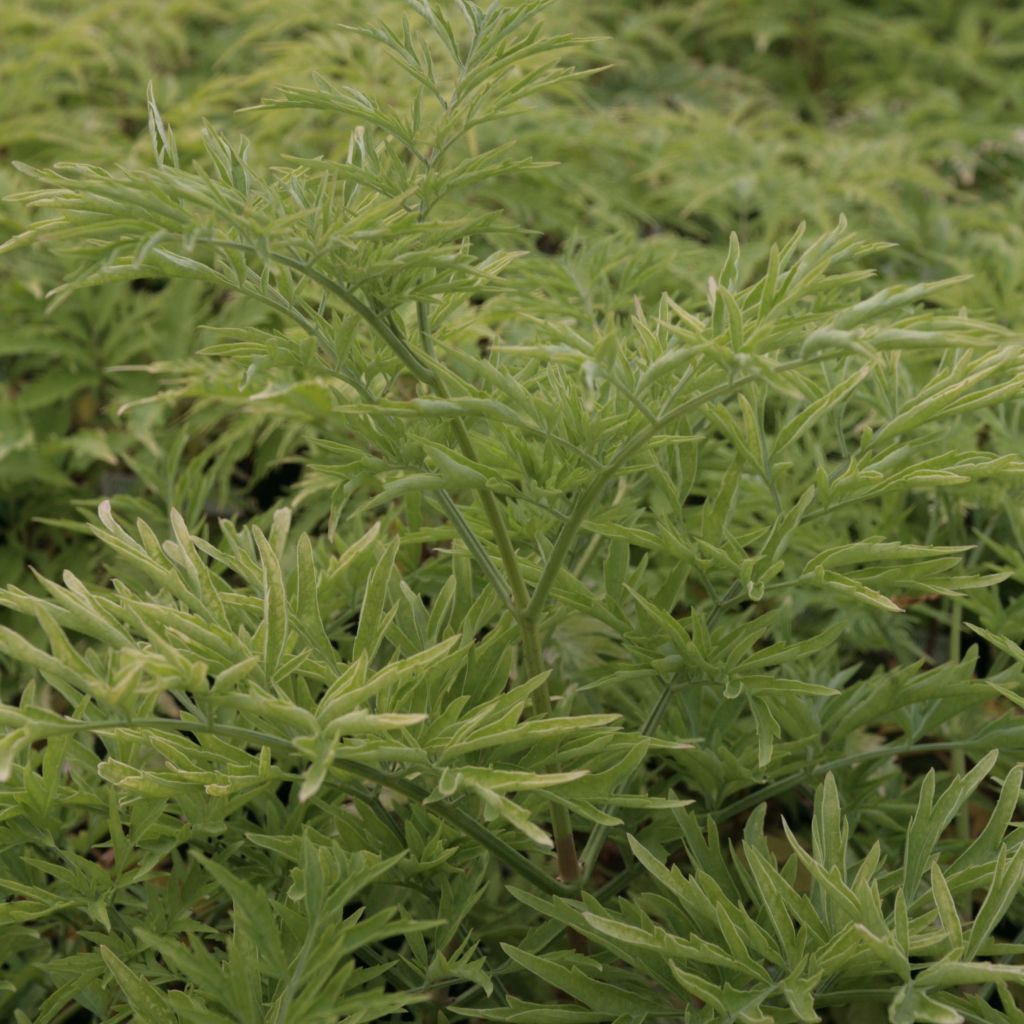

Sambucus nigra Golden Tower - Black Elder
Sambucus nigra Golden Tower - Black Elder
Sambucus nigra Golden Tower
European Elder, Black Elder, Elder, Elderberry, European Elderberry, European black Elderberry
Hello, young plant in excellent condition, a bit roughed up during transportation but will recover, it should be noted that in November it's the end of flowering so it's normal that it has been pruned! It's a Black Elderberry (Sambucus nigra), quite rare indeed, that's what I'm looking for at Promesse de Fleurs, their advice and choice of plants, whatever they may be. It will be even more beautiful in spring next year, in 2024! I have no regrets at all about my choices. Thank you.
Nathalie Bretagne Côtes d'Armor , 18/11/2023
Special offer!
Receive a €20 voucher for any order over €90 (excluding delivery costs, credit notes, and plastic-free options)!
1- Add your favorite plants to your cart.
2- Once you have reached €90, confirm your order (you can even choose the delivery date!).
3- As soon as your order is shipped, you will receive an email containing your voucher code, valid for 3 months (90 days).
Your voucher is unique and can only be used once, for any order with a minimum value of €20, excluding delivery costs.
Can be combined with other current offers, non-divisible and non-refundable.
Home or relay delivery (depending on size and destination)
Schedule delivery date,
and select date in basket
This plant carries a 24 months recovery warranty
More information
We guarantee the quality of our plants for a full growing cycle, and will replace at our expense any plant that fails to recover under normal climatic and planting conditions.

Would this plant suit my garden?
Set up your Plantfit profile →
Description
The Sambucus nigra Golden Tower, also known as Elder, is a recent creation from the Netherlands, notable for its elegance and brightness. It forms, as its name suggests, a very beautiful deciduous bush with a narrow and flexible habit, featuring unique foliage, green-golden, finely cut, with a feathery and shiny appearance. Its summer flowering in large white umbels adds to its charm. It is also a hardy plant and easy to grow in ordinary soil, in full sun or partial shade. Original and bright, it can be planted as a stand-alone specimen, in the centre of a bed, or in a large pot on the terrace.
The Sambucus nigra Golden Tower is a plant belonging to the caprifoliaceae family, just like honeysuckles. It comes from the Sambucus nigra, a widespread wild species in Europe, North Africa, and even in Asia Minor. It is an upright, narrow, and columnar bush, supported by flexible branches, reaching a height of 3m (9 ft 10in) and a width of 70cm (27.6in). Its fast growth allows it to reach maturity at 7 years. Its foliage is splendid with leaves finely divided into numerous thin leaflets, elongated, with curled edges and ranging in colour from golden yellow to acidic green. The flowering usually occurs in June (or a little earlier depending on the climate), in the form of broad false umbels measuring 10 to 20cm (7.9in). The small, white and slightly fragrant flowers, with 5 petals, are carried by reddish petioles.
The Golden Tower elder stands out for the brightness of its foliage and the elegance of its narrow habit. Like all elders, it is hardy and easy to grow in ordinary, not too dry soil, without any specific soil requirements. For example, plant it in a shrub bed, near an entrance or window, or along a path. You can also keep it in a large pot or container for many years. It can be combined, for example, with dark foliage plants (Physocarpus, Prunus, Berberis), burnet roses, or sapwood viburnums. It also pairs well with autumn colours, in front of a screen of deciduous smoke bushes, Cotinus, Hydrangea quercifolia, Parrotia persica...
In the kitchen: the flowers can be prepared as fritters or syrup by macerating them in sugar. In vinegar, the buds are used to enhance salads, and the berries are consumed as juice, jellies, jams, or wine. They pleasantly flavour apple cakes. Only the flowers and berries without their petioles are edible, the rest of the plant can be toxic.
In the garden:
Elderberry leaves are known to accelerate compost decomposition. Elderberry leaf infusion proves useful in organic gardening to fight against mildew and aphid attacks, or rodents: steep 1 kg of leaves for a few days in 10 L of water, and spray as needed. It can also be planted in an orchard, where it attracts insect-predatory birds.
Sambucus nigra Golden Tower - Black Elder in pictures
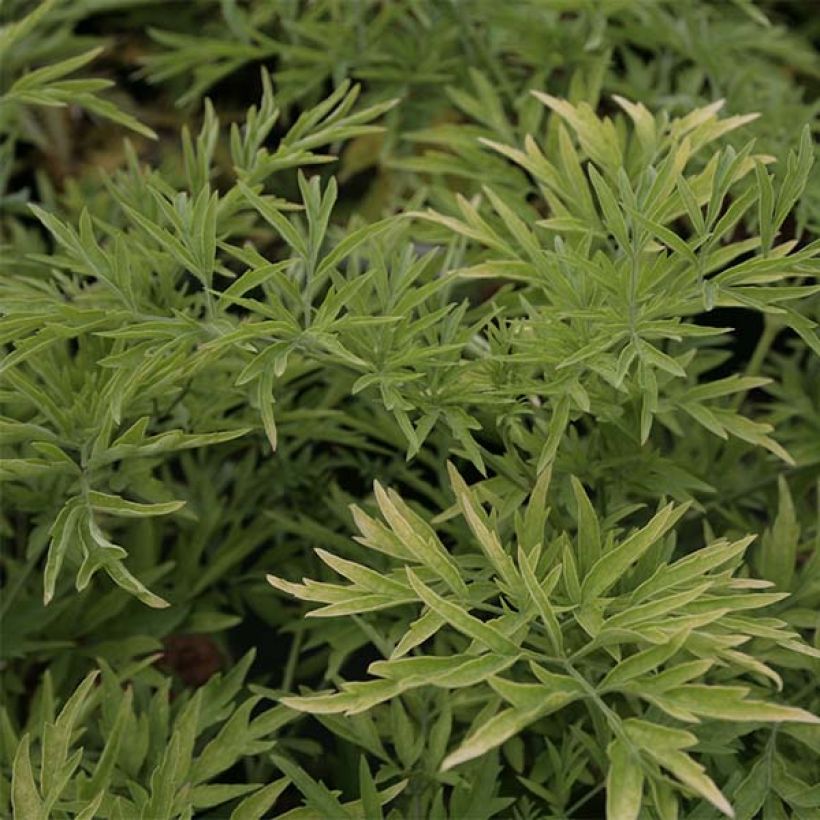

Plant habit
Flowering
Foliage
Botanical data
Sambucus
nigra
Golden Tower
Caprifoliaceae
European Elder, Black Elder, Elder, Elderberry, European Elderberry, European black Elderberry
Cultivar or hybrid
Other Sambucus - Elder tree
View all →Planting and care
Easy to grow, Golden Tower elderberry can be planted in spring or autumn, in any ordinary soil which is not too poor, deep enough and not too dry. It requires little maintenance. Plant it in a sunny or semi-shaded location. It is not very demanding on the soil, ideally half compost/half garden soil. It is very hardy. To promote flowering, prune the old branches to rejuvenate them and cut back the young branches by a third, at the end of winter.
Planting period
Intended location
Care
Planting & care advice
-
, onOrder confirmed
Reply from on Promesse de fleurs
Similar products
Haven't found what you were looking for?
Hardiness is the lowest winter temperature a plant can endure without suffering serious damage or even dying. However, hardiness is affected by location (a sheltered area, such as a patio), protection (winter cover) and soil type (hardiness is improved by well-drained soil).

Photo Sharing Terms & Conditions
In order to encourage gardeners to interact and share their experiences, Promesse de fleurs offers various media enabling content to be uploaded onto its Site - in particular via the ‘Photo sharing’ module.
The User agrees to refrain from:
- Posting any content that is illegal, prejudicial, insulting, racist, inciteful to hatred, revisionist, contrary to public decency, that infringes on privacy or on the privacy rights of third parties, in particular the publicity rights of persons and goods, intellectual property rights, or the right to privacy.
- Submitting content on behalf of a third party;
- Impersonate the identity of a third party and/or publish any personal information about a third party;
In general, the User undertakes to refrain from any unethical behaviour.
All Content (in particular text, comments, files, images, photos, videos, creative works, etc.), which may be subject to property or intellectual property rights, image or other private rights, shall remain the property of the User, subject to the limited rights granted by the terms of the licence granted by Promesse de fleurs as stated below. Users are at liberty to publish or not to publish such Content on the Site, notably via the ‘Photo Sharing’ facility, and accept that this Content shall be made public and freely accessible, notably on the Internet.
Users further acknowledge, undertake to have ,and guarantee that they hold all necessary rights and permissions to publish such material on the Site, in particular with regard to the legislation in force pertaining to any privacy, property, intellectual property, image, or contractual rights, or rights of any other nature. By publishing such Content on the Site, Users acknowledge accepting full liability as publishers of the Content within the meaning of the law, and grant Promesse de fleurs, free of charge, an inclusive, worldwide licence for the said Content for the entire duration of its publication, including all reproduction, representation, up/downloading, displaying, performing, transmission, and storage rights.
Users also grant permission for their name to be linked to the Content and accept that this link may not always be made available.
By engaging in posting material, Users consent to their Content becoming automatically accessible on the Internet, in particular on other sites and/or blogs and/or web pages of the Promesse de fleurs site, including in particular social pages and the Promesse de fleurs catalogue.
Users may secure the removal of entrusted content free of charge by issuing a simple request via our contact form.
The flowering period indicated on our website applies to countries and regions located in USDA zone 8 (France, the United Kingdom, Ireland, the Netherlands, etc.)
It will vary according to where you live:
- In zones 9 to 10 (Italy, Spain, Greece, etc.), flowering will occur about 2 to 4 weeks earlier.
- In zones 6 to 7 (Germany, Poland, Slovenia, and lower mountainous regions), flowering will be delayed by 2 to 3 weeks.
- In zone 5 (Central Europe, Scandinavia), blooming will be delayed by 3 to 5 weeks.
In temperate climates, pruning of spring-flowering shrubs (forsythia, spireas, etc.) should be done just after flowering.
Pruning of summer-flowering shrubs (Indian Lilac, Perovskia, etc.) can be done in winter or spring.
In cold regions as well as with frost-sensitive plants, avoid pruning too early when severe frosts may still occur.
The planting period indicated on our website applies to countries and regions located in USDA zone 8 (France, United Kingdom, Ireland, Netherlands).
It will vary according to where you live:
- In Mediterranean zones (Marseille, Madrid, Milan, etc.), autumn and winter are the best planting periods.
- In continental zones (Strasbourg, Munich, Vienna, etc.), delay planting by 2 to 3 weeks in spring and bring it forward by 2 to 4 weeks in autumn.
- In mountainous regions (the Alps, Pyrenees, Carpathians, etc.), it is best to plant in late spring (May-June) or late summer (August-September).
The harvesting period indicated on our website applies to countries and regions in USDA zone 8 (France, England, Ireland, the Netherlands).
In colder areas (Scandinavia, Poland, Austria...) fruit and vegetable harvests are likely to be delayed by 3-4 weeks.
In warmer areas (Italy, Spain, Greece, etc.), harvesting will probably take place earlier, depending on weather conditions.
The sowing periods indicated on our website apply to countries and regions within USDA Zone 8 (France, UK, Ireland, Netherlands).
In colder areas (Scandinavia, Poland, Austria...), delay any outdoor sowing by 3-4 weeks, or sow under glass.
In warmer climes (Italy, Spain, Greece, etc.), bring outdoor sowing forward by a few weeks.































